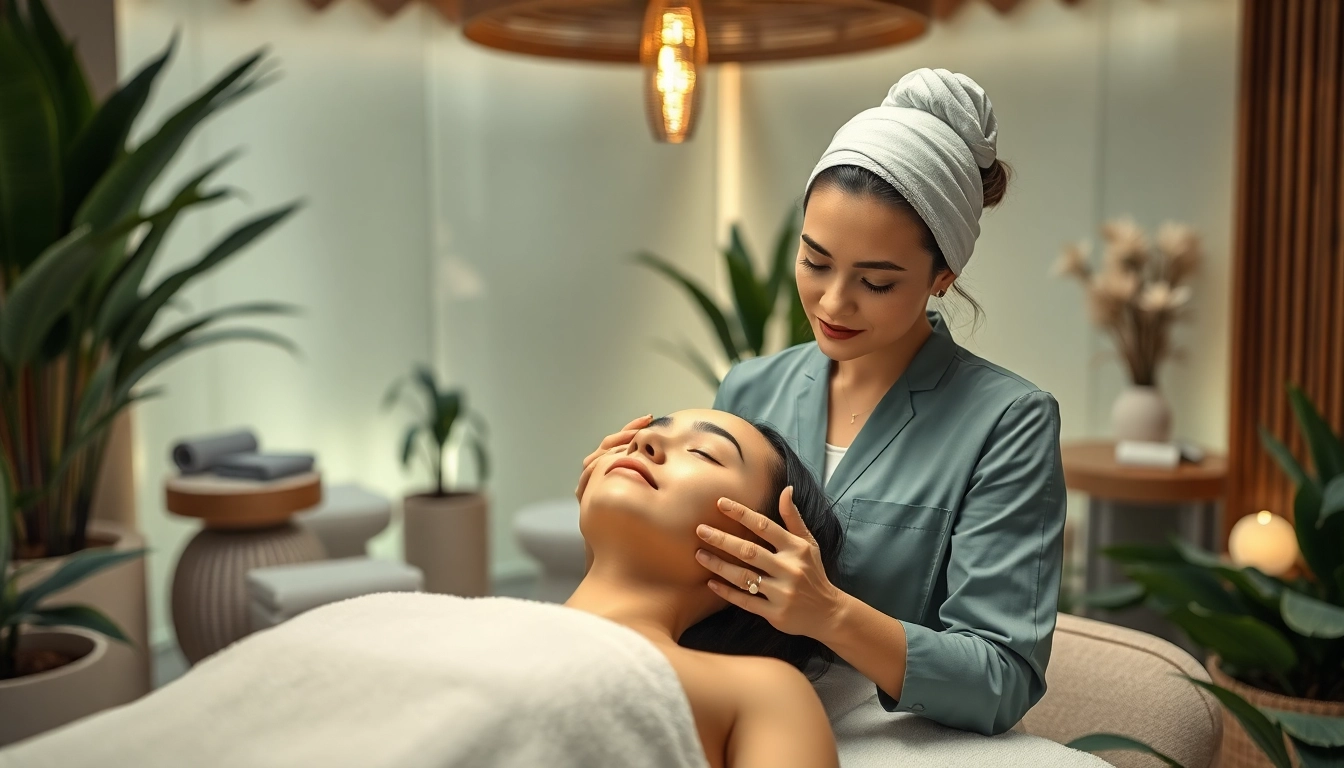Understanding Beauty Treatments
What is Beauty?
Beauty is a multifaceted concept deeply rooted in culture, personal perception, and societal standards. It transcends mere physical appearance, encompassing an individual’s overall health, confidence, and emotional well-being. While the classical definition often aligns beauty with visual appeal, contemporary interpretations recognize a broader scope that includes inner qualities such as kindness, intelligence, and authenticity. This evolution invites individuals to explore their unique forms of beauty, allowing for a more inclusive understanding that celebrates diversity in self-expression.
Common Beauty Treatments Available
With the growing interest in enhancing personal beauty, a vast array of treatments are now widely available. These include:
- Facials: Customized treatments that cleanse, exfoliate, and nourish the skin, addressing specific concerns such as acne, dryness, or aging.
- Waxing: A popular hair removal method that provides smoother, longer-lasting results than shaving.
- Microdermabrasion: A non-invasive cosmetic procedure that gently exfoliates the skin to improve texture and tone.
- Injectables: Treatments like Botox and dermal fillers are designed to reduce wrinkles and restore volume, offering immediate results.
- Laser Treatments: Techniques that use focused light to target various skin concerns, from pigmentation to hair removal.
These treatments can enhance one’s appearance, boost confidence, and promote a sense of well-being, making them integral to many individuals’ beauty regimens.
The Importance of Skin Care
Skin care is a crucial aspect of maintaining beauty. The skin is the body’s largest organ, acting as a barrier against environmental pollutants and pathogens. A well-crafted skin care routine can help preserve skin integrity, prevent premature aging, and address specific concerns such as acne or hyperpigmentation. Establishing a routine that includes cleansing, moisturizing, and sun protection is essential for achieving and maintaining healthy skin. Beauty treatments can complement this routine by providing more intensive care tailored to an individual’s needs.
Types of Beauty Therapies
Natural Remedies for Beauty
Natural beauty therapies utilize ingredients derived from plants, fruits, and other organic sources, emphasizing the power of nature in enhancing health and appearance. Common methods include:
- Essential Oils: Used in aromatherapy and topical applications for their beneficial properties.
- Herbal Masks: Combinations of herbs and oils that can nourish the skin and improve its appearance.
- DIY Exfoliants: Simple mixtures of sugar, salt, or coffee grounds with natural oils can provide effective exfoliation.
These remedies can offer holistic benefits, promoting not just beauty but overall health by reducing reliance on chemical products.
Advanced Beauty Technologies
The beauty industry has seen remarkable advancements in technology, leading to innovative treatments that promise effective and lasting results. Key technologies include:
- Laser Resurfacing: A precise method that removes layers of damaged skin for a smoother texture and improved tone.
- 3D Skin Analysis: High-tech imaging used by professionals to assess skin conditions and tailor treatments more effectively.
- RF Skin Tightening: Radio frequency technology that stimulates collagen production, providing a lifted appearance without invasive surgery.
These advanced techniques have transformed the landscape of beauty treatments, offering options that cater to specific concerns with greater precision and effectiveness.
DIY Beauty Regimens
Do-it-yourself beauty regimens have gained popularity, allowing individuals to take control of their beauty routines at home. Whether it’s making face masks from kitchen ingredients or creating exfoliating scrubs, DIY approaches offer several benefits:
- Cost-Effective: They often require minimal investment compared to professional treatments.
- Customization: Individuals can tailor recipes to their specific skin types and concerns.
- Accessibility: Many ingredients are readily available at home or in grocery stores.
However, it’s crucial to research ingredients to avoid potential skin reactions and ensure optimal results.
Benefits of Professional Beauty Services
Expertise and Personalization
One of the main advantages of seeking professional beauty services is the expertise that licensed professionals bring to the table. Trained estheticians and dermatologists can assess skin conditions accurately, recommending treatments that suit individual needs. This personalization ensures that every service, from facials to advanced skin treatments, addresses unique concerns, fostering better outcomes. With their knowledge of latest techniques and products, professionals can also educate clients about effective skin care practices.
Immediate Results from Treatments
Many beauty treatments deliver immediate results that can be particularly alluring for occasions such as weddings, parties, or job interviews. Treatments like chemical peels, microdermabrasion, and injectables often produce visible improvements after just one session. These quick results can enhance self-esteem and confidence, particularly in social situations. Clients can often leave a spa or clinic feeling rejuvenated and transformed, showcasing the efficacy of professional treatments.
Long-term Skin Health Benefits
Investing in professional beauty services isn’t only about instant gratification; many treatments promote long-term skin health. Regular facials can help maintain skin clarity and hydration, reducing the appearance of aging. Treatments like microneedling stimulate collagen production, leading to improved texture and firmness over time. By incorporating professional services into a broader beauty regimen, individuals can experience cumulative benefits that enhance their natural beauty more sustainably.
Choosing the Right Beauty Treatment
Assessing Your Skin Needs
The first step in selecting an appropriate beauty treatment is to assess your skin’s needs. Factors to consider include skin type (oily, dry, combination, or sensitive), current skin concerns (like acne, aging, or discoloration), and any previous treatments or allergies. Keeping a skin journal can be helpful, tracking daily changes and responses to products. This self-awareness forms the foundation for informed decision-making when consulting with professionals.
Consulting with Beauty Professionals
It is crucial to engage with beauty professionals, as their expertise can guide individuals toward the most effective treatment choices. During consultations, clients should discuss their skin concerns, desired outcomes, and ask about the potential risks and benefits of recommended procedures. A professional assessment may involve skin analysis and recommendations based on the latest industry standards. Building a strong rapport with professionals can also facilitate ongoing personalized care tailored to evolving skin needs.
Understanding Treatment Options
With a plethora of beauty treatments available, understanding the options is vital for informed choices. Each treatment comes with its own set of processes, costs, and expected outcomes. Clients should seek to understand how each treatment works, the time required for appointments, and any necessary aftercare. This knowledge empowers individuals, enabling them to choose treatments that align with their lifestyles and comfort levels, ultimately leading to greater satisfaction with results.
Trends in the Beauty Industry
Emerging Beauty Products
The beauty industry is characterized by constant innovation, with emerging products reflecting current consumer preferences and scientific advancements. Popular trends today include:
- Clean Beauty: A focus on non-toxic ingredients and environmentally friendly practices.
- Multi-Functional Products: Items that serve several purposes, such as tinted moisturizers with SPF.
- Personalization: Customizable products tailored to individual skin types and concerns.
Staying updated with these emerging products allows consumers to make choices that align with modern values, particularly around health and sustainability.
Sustainable Beauty Practices
Sustainability has become a cornerstone of modern beauty practices. Consumers and professionals alike are increasingly prioritizing eco-friendly products and sustainable sourcing. This involves choosing brands that use biodegradable packaging, sustainable ingredients, and ethical manufacturing practices. Moreover, many beauty salons and spas are now adopting green principles, such as reducing waste, recycling, and using energy-efficient methods, showing a commitment to preserving the environment while offering high-quality services.
The Influence of Social Media on Beauty
Social media platforms have significantly reshaped the beauty landscape, fueling trends and influencing consumer behavior. The power of visual storytelling allows beauty brands to showcase products and services effectively, while influencers can shape perceptions and drive product popularity. Platforms like Instagram and TikTok have become crucial for discovering new styles, treatments, and trends. However, consumers must navigate this landscape critically, discerning between genuine recommendations and marketing tactics to make informed beauty choices.



